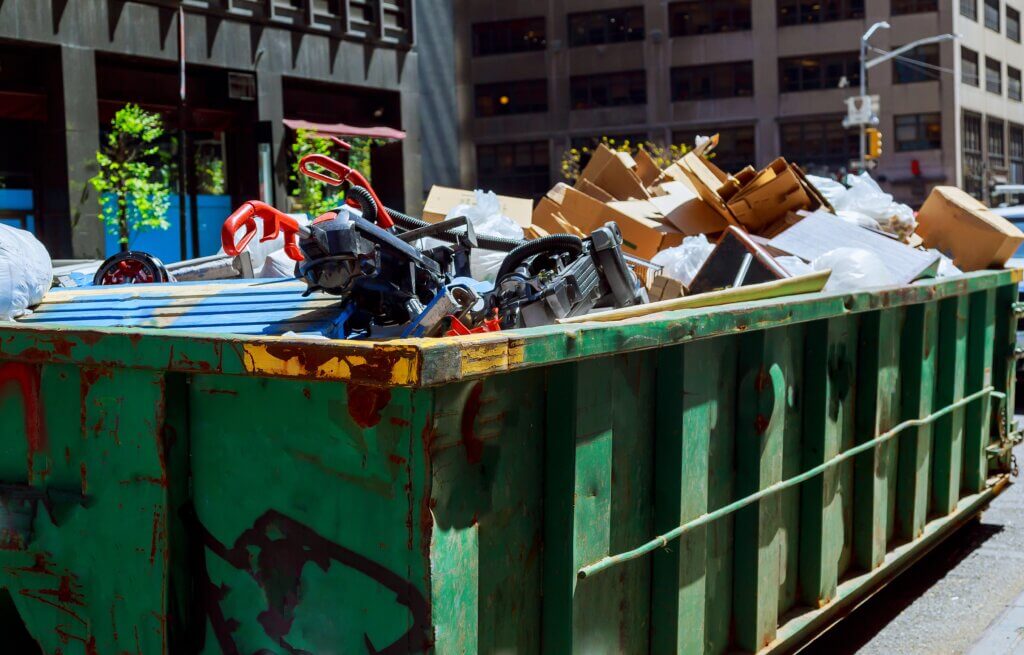Choosing the Right Size of Dumpster for Your Project
For anyone in the roll-off dumpster business, understanding the significance of size selection is vital. It’s like finding the right tool for the job; the wrong choice can lead to inefficiencies, extra costs, and unhappy clients.
Why Size is Important for Cost and Efficiency
The size of a dumpster is directly proportional to its effectiveness in a project. Making the right choice can:
- Cost-Efficiency: Save customers money by avoiding overage fees or the need for multiple pickups.
- Efficient Waste Management: Ensure that all waste is contained appropriately without overflows or the need for additional disposal methods.
- Safety: Reduce potential hazards that arise from overloaded dumpsters, such as spills or tipping risks.
Common Mistakes in Dumpster Size Selection
In this industry, it’s not uncommon to see a few recurring mistakes. Some of the frequent blunders include:
- Underestimating Volume: It’s easy to miscalculate the amount of waste a project might generate. This often results in picking a dumpster that’s too small.
- Overcompensating: On the flip side, fearing the previous mistake, some might opt for an overly large dumpster. This can lead to unnecessary costs for the client.
- Not Considering Waste Type: Different projects produce various types of waste. Some items are bulky, while others are dense. The right size of dumpster should accommodate the specific waste type efficiently.
In the world of roll-off dumpsters, knowledge is power. Knowing how to guide a client in choosing the right size of dumpster for their project can set a business apart. It fosters trust, ensures repeat business, and elevates the company’s reputation in the market.

Understanding Different Dumpster Sizes
In the realm of roll-off dumpster services, having a diverse range of sizes ensures that customers’ varied needs are met. But understanding these sizes and their optimal use cases is the key to assisting clients effectively.
The Typical Dumpster Sizes
While dimensions can vary slightly depending on manufacturers and specific designs, here’s a general breakdown of common dumpster sizes:
- 10-Yard Dumpsters: These are the “small guys” in the mix. Best suited for:
- Small home cleanouts
- Minor landscaping projects
- Small renovations like a single-room makeover
- 20-Yard Dumpsters: A size that offers a balance. Ideal for:
- Medium-sized home cleanouts
- Deck or patio removals
- Carpet or flooring removal for larger homes
- 30-Yard Dumpsters: For those heftier projects. They’re the go-to for:
- New home constructions
- Major home additions
- Large landscaping tasks, like tree removal
- 40-Yard Dumpsters: The largest in the standard lineup. Perfect for:
- Commercial building cleanouts
- Large demolition projects
- Entire home renovations
Size Selection Tips
Understanding the capacities and dimensions of these dumpsters can streamline operations and lead to more accurate client recommendations. Here are some additional tips:
- Assess the Waste: Before deciding on a size, consider the type of waste. Bulky items might need more space, while heavier items could push weight limits.
- Think Ahead: If a client is unsure about the amount of waste, it might be better to recommend a size up. This ensures there’s room to accommodate any unexpected debris.
- Location Matters: Ensure that the chosen dumpster size can be placed safely on the client’s property, considering factors like overhead wires and available space.
By recognizing the unique features and advantages of each dumpster size, businesses can foster better relationships with clients. Offering informed suggestions not only eases the waste disposal process but also establishes the company as reliable and knowledgeable in its field.
Factors to Consider When Choosing the Right Size of Dumpster
When it comes to selecting the perfect roll-off dumpster for a specific project, size is only one piece of the puzzle. Understanding the various factors that can influence this choice is essential to ensure efficiency, safety, and cost-effectiveness.
Nature of the Project
Before diving into dumpster sizes, reflect on the project’s core aspects:
- Duration: Longer projects might generate more waste, making it wise to opt for a larger container.
- Type: A cleanout differs from a renovation. The former may involve bulkier items, while the latter could produce more construction debris.
Type of Waste
The materials being disposed of can drastically influence the dumpster size:
- Bulkiness: Furniture and large appliances can eat up space quickly.
- Weight: Materials like concrete or dirt are heavy, so even if they don’t fill the dumpster, they might meet its weight limit.
Space Availability
Having the biggest dumpster doesn’t help if there’s no place to put it. Ensure the chosen dumpster can be safely and conveniently positioned.
Local Regulations and Restrictions
Local rules can affect dumpster placement and the type of waste allowed:
- Permits: Some municipalities require permits for larger dumpsters, especially if they need to be placed on a public street.
- Prohibited Items: Certain items might not be allowed in roll-off dumpsters, or may only be permitted in specific sizes.
Budget Constraints
While it’s tempting to recommend the largest size available, staying within a client’s budget is vital. Sometimes, opting for a medium size and scheduling an additional haul-away can be more cost-effective than going big from the start.
Future Needs
For clients who foresee regular waste generation, such as businesses or long-term projects, it might be more economical to think ahead. For instance, they could select a slightly larger size to accommodate future waste needs.
Safety Considerations
Overloading a dumpster is a safety hazard. It can make transportation risky and increase the chances of accidents. Always ensure there’s enough room in the dumpster for all the waste, without resorting to overfilling.
In conclusion, while the dimensions and capacities of roll-off dumpsters are essential to understand, the decision-making process goes beyond just numbers. By considering the above factors and tailoring recommendations to each client’s unique needs, businesses can offer more value and build lasting trust.
Cost Implications of Choosing the Right Size of Dumpster
Navigating the financial aspects of roll-off dumpster rentals can sometimes feel like a balancing act. The goal is to find a size that suits a project’s needs without incurring unnecessary expenses. Recognizing the cost implications tied to the size choice can significantly influence the final decision and ensure optimal value for money.
Initial Rental Fees
The most immediate cost tied to a dumpster is its rental fee. Naturally:
- Smaller dumpsters are generally cheaper.
- Larger dumpsters carry a heftier price tag.
However, the cost per cubic yard might decrease as the size increases, meaning larger dumpsters could offer better value in terms of volume-to-cost ratio.
Overage Charges
Choosing a dumpster that’s too small may lead to overloading, and this can result in:
- Excess weight fees: If the dumpster exceeds its weight limit.
- Additional rental fees: If another dumpster is required to handle the overflow.
Frequency of Pick-ups
For long-term projects, considering the frequency of pick-ups becomes essential:
- Smaller dumpsters might fill up faster, leading to frequent hauls, which could ramp up costs.
- A slightly larger dumpster may mean fewer pickups, potentially saving money in the long run.
Permit Costs
In certain locations, placing a large roll-off dumpster, especially on public property, could necessitate a permit. These permits often come with associated fees.
Disposal Fees
The cost of disposing of the waste can vary based on:
- The weight of the waste.
- The type of waste (with hazardous materials typically costing more to process).
Potential Savings from Recycling
Some larger dumpsters might have sections or compartments that facilitate easier recycling separation. This could lead to savings in disposal fees and may even generate some revenue if recyclables are sold.
Missed Opportunity Costs
Renting a dumpster that’s too large for the project means paying for unused space. While it’s good to have a buffer, a consistently half-empty dumpster can be a sign of wasted resources.
Damage or Cleanup Fees
A dumpster that’s too small might result in waste spillage, which can lead to cleanup costs. Moreover, overloaded dumpsters can damage surfaces when placed or moved.
In essence, while the initial rental fee of a roll-off dumpster provides a starting point, the true cost implications are multi-faceted. Smart choices based on a comprehensive understanding of these factors can lead to significant savings and ensure that a project stays within budget.

Final Thoughts
Selecting the ideal roll-off dumpster size isn’t just about the physical dimensions—it’s a critical decision that impacts the efficiency, budget, and smooth progression of any project. By arming oneself with comprehensive knowledge and understanding the nuances of different dumpster sizes, one can make cost-effective decisions that align with project needs. Whether a seasoned roll-off dumpster business owner or someone new to the field, always prioritize informed choices, ensuring project success and sustainability for the long haul.
FAQs
- How do I accurately estimate the size of the dumpster needed for my project?
It’s essential to evaluate the nature and volume of waste the project will generate. For large projects or major clean-outs, opt for larger dumpsters. If unsure, consulting with your dumpster rental company can provide expert guidance. - Are there restrictions on what can be placed in larger roll-off dumpsters?
Yes, while larger dumpsters can accommodate more waste, there are still prohibitions against certain hazardous or oversized items. Always check with your rental company about specific restrictions. - Does choosing a larger dumpster size automatically mean higher disposal fees?
Not necessarily. While larger dumpsters can carry more waste, the cost also depends on the weight of the debris and local landfill fees. It’s sometimes more cost-effective to rent one large dumpster than multiple smaller ones. - How does the location of my project influence the size of the dumpster I should choose?
The project’s location can impact the type and amount of waste generated. For instance, urban renovations might produce different waste compared to rural projects. Also, consider the physical space available for dumpster placement. - If I’m unsure about the size needed, is it better to go larger to be safe?
It’s generally advisable to choose a slightly larger size if uncertain. This ensures you won’t run out of space, avoiding the need for an additional dumpster and potentially saving on costs. However, consult with your dumpster rental provider for the best advice.


